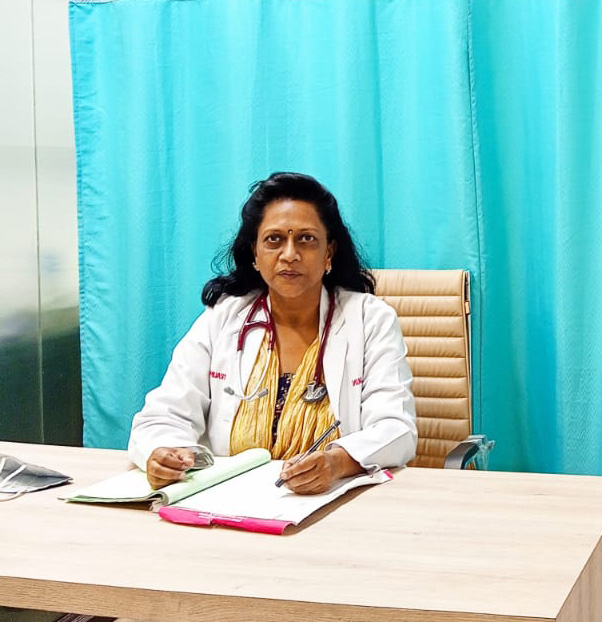Hernias occur when an internal part of the body protrudes through a weakened muscle or tissue wall. Hernias are a common health concern, and among the various types, femoral hernias stand out as a rare but significant issue. More prevalent in women, these hernias account for just 1 in 20 groin hernias, often manifesting as a painful lump in the inner upper thigh.
Dr Amita Jain who is one of the best hernia repair surgeons in Delhi in the field of laparoscopic surgery shares her insight on the topic.
What is a Femoral Hernia?
Muscles usually keep your organs in place, but sometimes strain can cause intra-abdominal tissues to push through weak spots. When this happens in the femoral canal, it’s called a femoral hernia or a femorocele which is seen as a bulge near the groin. The femoral canal holds the femoral artery, veins, and nerves below the inguinal ligament.
Women are more prone to Femoral hernia. While most don’t show symptoms, they can become serious if they block blood flow to the intestines, leading to a strangulated hernia. This is a medical emergency, requiring immediate surgery.
What are the Causes of Femoral Hernia?
The causes of femoral hernias include:
- Engaging in heavy lifting.
- Experiencing strain during bowel movements.
- Being overweight.
- Persistent, forceful coughing.
- Childbirth.
- Accumulation of abdominal fluid, known as ascites.
- Undergoing peritoneal dialysis, a treatment for kidney disease.
This type of hernia typically occurs when there is a breach in the abdominal wall, allowing the protrusion to push through the femoral canal. Unlike inguinal hernias, femoral hernias are more prevalent in women, particularly older women, due to the broader shape of the female pelvis. They are rare in children.
What are the Symptoms of Femoral Hernia?
Femoral hernias, particularly small to moderate-sized ones, can be asymptomatic, making them difficult to detect. The absence of noticeable bulges is common in such cases. However, larger femoral hernias may present as a visible protrusion in the groin area near the upper thigh, accompanied by discomfort.
The bulge may become more prominent and lead to pain when standing, lifting heavy objects, or straining. Notably, these hernias are often situated in close proximity to the hip bone, contributing to hip pain in some instances. Although some individuals may not perceive any bulge or pain, larger hernias can lead to a visible, painful bulge in the upper thigh, especially during exertion.
A femoral hernia causing intestinal obstruction can lead to a critical condition known as strangulation. This life-threatening situation results in the death of intestinal or bowel tissue and requires immediate medical attention. In such severe cases, distinct symptoms noticed are:
- Intense abdominal pain
- Severe groin pain
- Nausea
- Inability to pass gas
- Vomiting
- Heightened tenderness or exacerbation of pain around the hernia swelling
- Presence of fever
- Accelerated heart rate
- Skin redness around the bulging area
What about the Diagnosis of Femoral Hernia?
Diagnosing a femoral hernia usually starts with a hands-on examination by a doctor, feeling for any noticeable bulges. If the bulge isn’t easily felt, an ultrasound of the abdomen and groin is recommended. This imaging technique helps the surgeon identify the exact location of the muscle wall defect and any displaced tissue, confirming or establishing the diagnosis.
What are the Treatment options for Femoral Hernia?
Femoral hernias can be treated in two ways:
a) Open Surgery involves a large incision made by the doctor to put back the organ in its place. This is followed by stitching to close the wound. Due to the substantial incision, the recovery period is also long.
b) Laparoscopy, or keyhole surgery, is a less invasive but more complex approach for femoral hernia repair. It involves making multiple smaller incisions, enabling the surgeon to use specialized instruments to fix the hernia. This technique minimizes blood loss, promotes a quicker recovery, and reduces post-operative discomfort compared to open surgery.
Complications of a femoral hernia include:
Incarcerated Femoral Hernia: The hernia becomes permanently trapped in the femoral canal, causing it to be stuck in the abdomen.
Obstructed Femoral Hernia: The hernia and protruded intestinal area become entangled, resulting in severe pain in the intestines.
Strangulated Femoral Hernia: Blood supply to the herniated tissue is cut off, leading to tissue death and the release of toxins, which can cause sepsis or death. Immediate medical help is crucial in such emergencies.
Femoral hernias, more prevalent in women, pose a risk of serious complications such as strangulation, demanding prompt medical attention. Symptoms may be subtle, making diagnosis challenging. Treatment options, ranging from open surgery to laparoscopy, aim to alleviate the hernia’s impact. Awareness of potential complications underscores the importance of timely intervention in managing this abdominal condition.

Dr Amita Jain is a surgeon with the highest degree of professional competence, precision and surgical craftsmanship. Performed all complicated general surgery procedures with in depth knowledge of invasive and few minimal invasive and onco surgical techniques. Underwent special training in trauma, executed various trauma-related complex life-saving neurosurgical procedures, reconstructed injured mangled limbs and performed vascular and reconstructive procedures with critical care.
Dr Amita Jain holds 28 plus years of rich experience in Trauma and General Laparoscopic Surgeries (including Gallbladder stone removal, appendix removal, hernia repair surgery, piles and fissure surgeries). She was the Professor Surgery of at the Army College of Medical Sciences and Base Hospital Delhi Cantt. In 1994 she was commissioned as Surgeon under the United Nations Mission in Congo. From 2020 to 2022, she worked with Bansals Hospital. Currently, Dr Amita Jain is the Sr. General and Laparoscopic Surgeon at Rainbow Children Hospitals, Malviya Nagar, Delhi.
Or Call Us at +(91) 882-6615301

